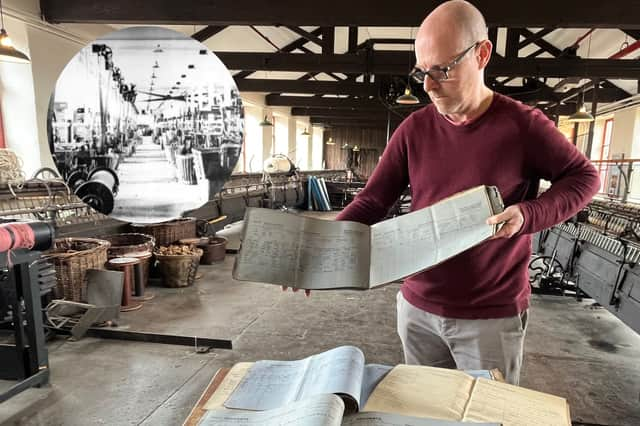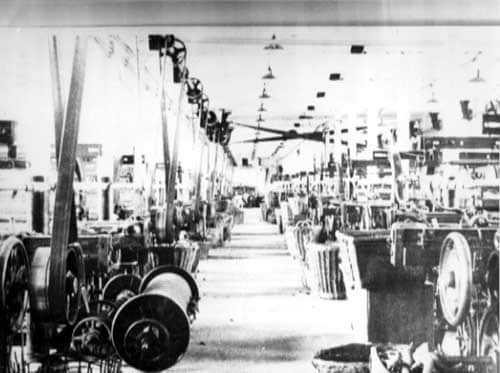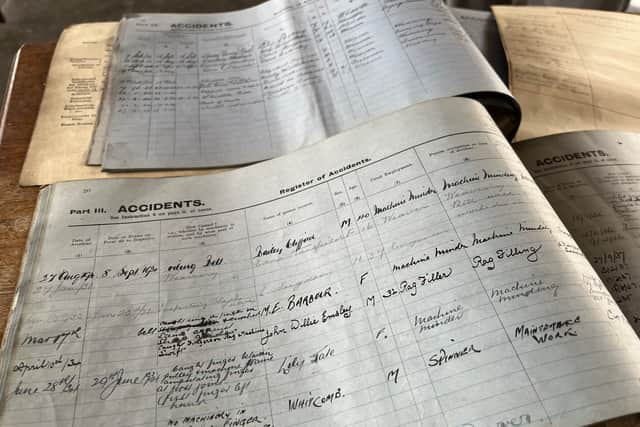Leeds Industrial Museum: Accident book recording 'harrowing injuries and tragic deaths' discovered at mill
and live on Freeview channel 276
The Edwardian book, described as a "treasure trove of information", details the harrowing injuries and tragic deaths suffered by workers who toiled in one of the world’s largest textile mills.
It was found stashed in a box by curators at Leeds Industrial Museum in Armley, which was once a massive, globally renowned hub for wool and fabric production.
Advertisement
Hide AdAdvertisement
Hide AdListed within were scores of incidents which lay bare the harsh working conditions and gruelling lifestyle endured by the city’s textile workers shortly after the turn of the 20th century.


Among the tragedies described is the death of 44-year-old William Bell, who was killed in February 1905 when a milling machine he was moving with his fellow workers unexpectedly toppled onto him.
Mr Bell, who had worked at Armley for four years, and his colleague Albert Holdsworth were moving a cloth milling device weighing around two tonnes from one side of a room to the other using rollers.
A report at the time read: “Suddenly, and without warning, the machine fell onto Bell and Holdsworth. Assistance was immediately at hand and the unfortunate men were extricated with difficulty.”
Advertisement
Hide AdAdvertisement
Hide AdThe records also revealed that W. Hinchcliffe, a 40 year-old engineer, was killed while removing firebars, used to support fuel, from a boiler before a formal inspection in September 1909.


Other workers suffered severed fingers and one fell down the stairs while carrying a warp, which was used to prepare fabric for weaving.
Later incidents saw Doris Gatenby, an 18-year-old weaver, fall foul of a common accident in weaving departments, when in May 1922 she received a cut near her temple after a shuttle flew out of a loom and hit her on the head.
And in September 1935 filler and minder Edna Atkinson had three fingers of her left hand crushed in the rollers of a ‘Scotch Feed’ carding engine.
Advertisement
Hide AdAdvertisement
Hide AdAlso included in the documents, which all date from when the mill was owned and operated by Bentley and Tempest, is a list of the names and addresses for workers who, despite the harsh conditions, were aged under 16 and under 18.


John McGoldrick, Leeds Museums and Galleries’ curator of industrial history, said: “We know that for hundreds of years, the museum was a bustling, hugely productive centre for the manufacture of textiles, which employed hundreds of people from the local area.
“But until now, we haven’t known a great deal about the individuals who worked here, so finding these documents is a real treasure trove of information from which we can start to build a much more complete picture of life at the mill.
“In particular, seeing such stark details of the injuries and deaths suffered by workers here more than a century ago paints a very vivid picture of how difficult and gruelling their working conditions must have been, and helps us to better understand the impact of the textile trade on the lives of people in Leeds.”
Advertisement
Hide AdAdvertisement
Hide AdBuilt in at least the 1600s, Armley Mills was bought in the late 1700s by Colonel Thomas Lloyd, a Leeds cloth merchant. He expanded operations on the site dramatically, so much so that Armley was soon the world’s biggest mill of its kind.
Although production ended in 1969, the site reopened as Leeds Industrial Museum in 1982 and today displays vintage machinery including traditional looms and other textile equipment once used by workers.
Councillor Jonathan Pryor, Leeds City Council’s deputy leader and executive member for economy, culture and education, said: “The textile industry played a huge role in establishing Leeds as an economic powerhouse and is part of the fabric of the city and its heritage.
Advertisement
Hide AdAdvertisement
Hide AdComment Guidelines
National World encourages reader discussion on our stories. User feedback, insights and back-and-forth exchanges add a rich layer of context to reporting. Please review our Community Guidelines before commenting.
